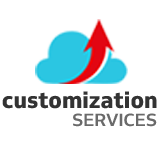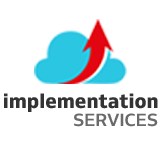Effective capacity planning is crucial for staying ahead of the competition in today’s fast-paced manufacturing landscape. Whether you’re a seasoned manufacturer or a budding entrepreneur, understanding the ins and outs of capacity planning can make you successful in the market. Let’s delve into key strategies and best practices to optimize manufacturing capacity and drive sustainable growth.
Understanding Capacity Planning
Capacity planning is the backbone of manufacturing operations, encompassing a spectrum of activities to align production capabilities with market demands. It involves meticulously assessing resources, constraints, and production processes to ensure optimal utilization and efficiency.
Manufacturers can enhance productivity, reduce costs, and deliver superior customer experiences by accurately forecasting future demands and strategically allocating resources.
Key Strategies for Effective Capacity Planning
Investment in Technology:
By adopting advanced technologies like automation, artificial intelligence, and IoT, manufacturers can streamline production, improve efficiency, and discover fresh avenues for innovation. Making technology investments allows manufacturers to increase productivity, shorten lead times, and gain a competitive edge in the market.
Continuous Monitoring and Evaluation:
Capacity planning is a constant process that demands consistent monitoring and assessment. Manufacturers can pinpoint bottlenecks, enhance workflows and operational efficiency, and enhance by monitoring KPIs and utilizing real-time data analytics for continual improvement.
Flexible Production Systems:
In a dynamic market environment, flexibility is key. Implementing agile production systems allows manufacturers to swiftly adapt to changing demand patterns and product variations, ensuring optimal resource utilization and quick response times.
Forecasting and Supply Chain Management:
Accurate demand forecasting and robust supply chain management are the cornerstone of effective capacity planning. Manufacturers can anticipate demand fluctuations by leveraging data analytics and market insights and proactively adjust production schedules and inventory levels to meet customer needs.
Best Practices for Capacity Planning
Invest in Employee Training & Development: Empower your workforce with the necessary skills and knowledge to excel. Manufacturers can enhance employee competencies, foster innovation, and create continuous improvement by investing in training and development programs.
Utilize Scenario Planning: Anticipate various scenarios and develop contingency plans to mitigate risks and uncertainties. Manufacturers can minimize disruptions and maintain operational resilience by preparing for different demand scenarios.
Maintain Open Communication: Encourage transparent communication and teamwork at every level within the company. Manufacturers can harmonize objectives, address conflicts, and promote joint decision-making by promoting cross-functional conversations and exchanging ideas.
Embrace Sustainability Practices: Incorporate sustainability into your capacity planning strategy to minimize environmental impact and drive long-term value creation. By adopting eco-friendly practices, such as waste reduction, energy efficiency, and responsible sourcing, manufacturers can reduce costs, enhance brand reputation, and contribute to a more sustainable future.
Conclusion:
The Acumatica ERP system is pivotal in streamlining operations and facilitating effective capacity planning. With its comprehensive modules tailored for manufacturing, Acumatica empowers businesses to integrate production processes, inventory management, and demand forecasting seamlessly. Acumatica gives manufacturers the necessary insights and tools to improve resource allocation, reduce expenses, and boost customer satisfaction.

Vijay comes with a vast experience in ERP and enterprise solutions space with about 20 years of experience in various packaged application like Acumatica, SAP, Orion, Salesforce.com, SugarCRM and, SalesLogix.
















